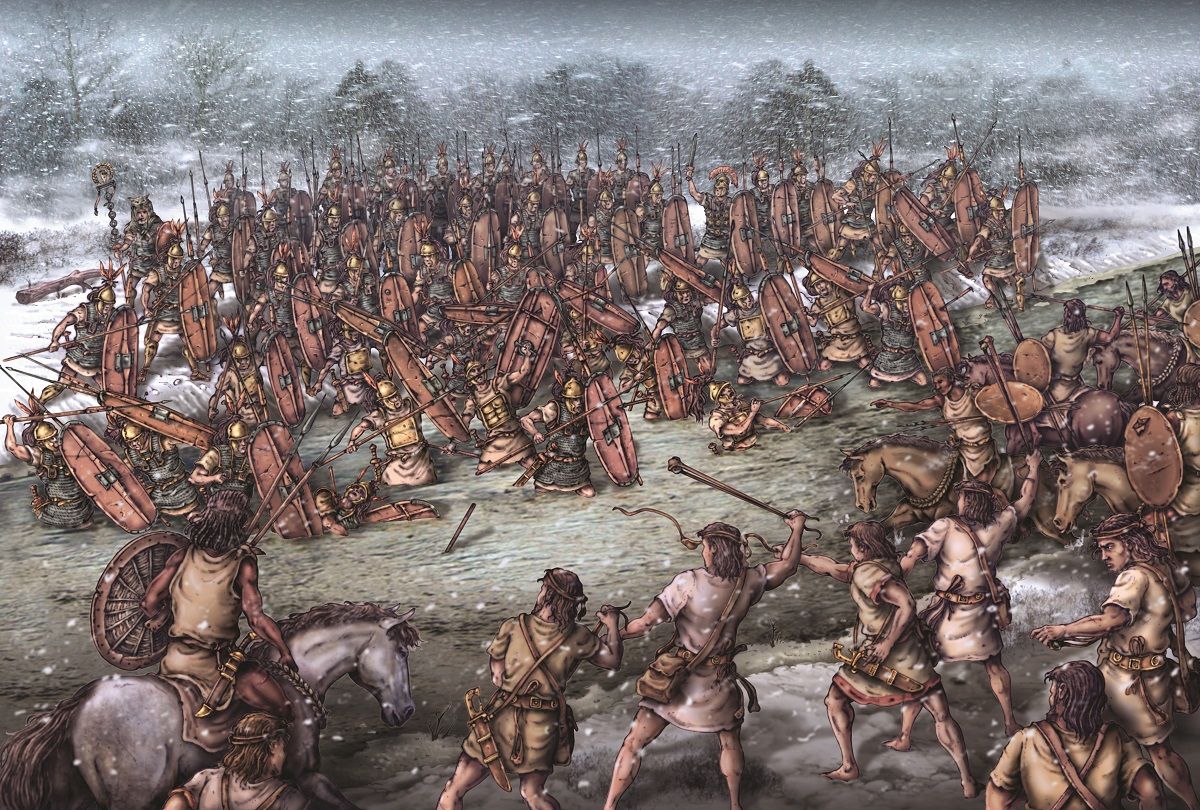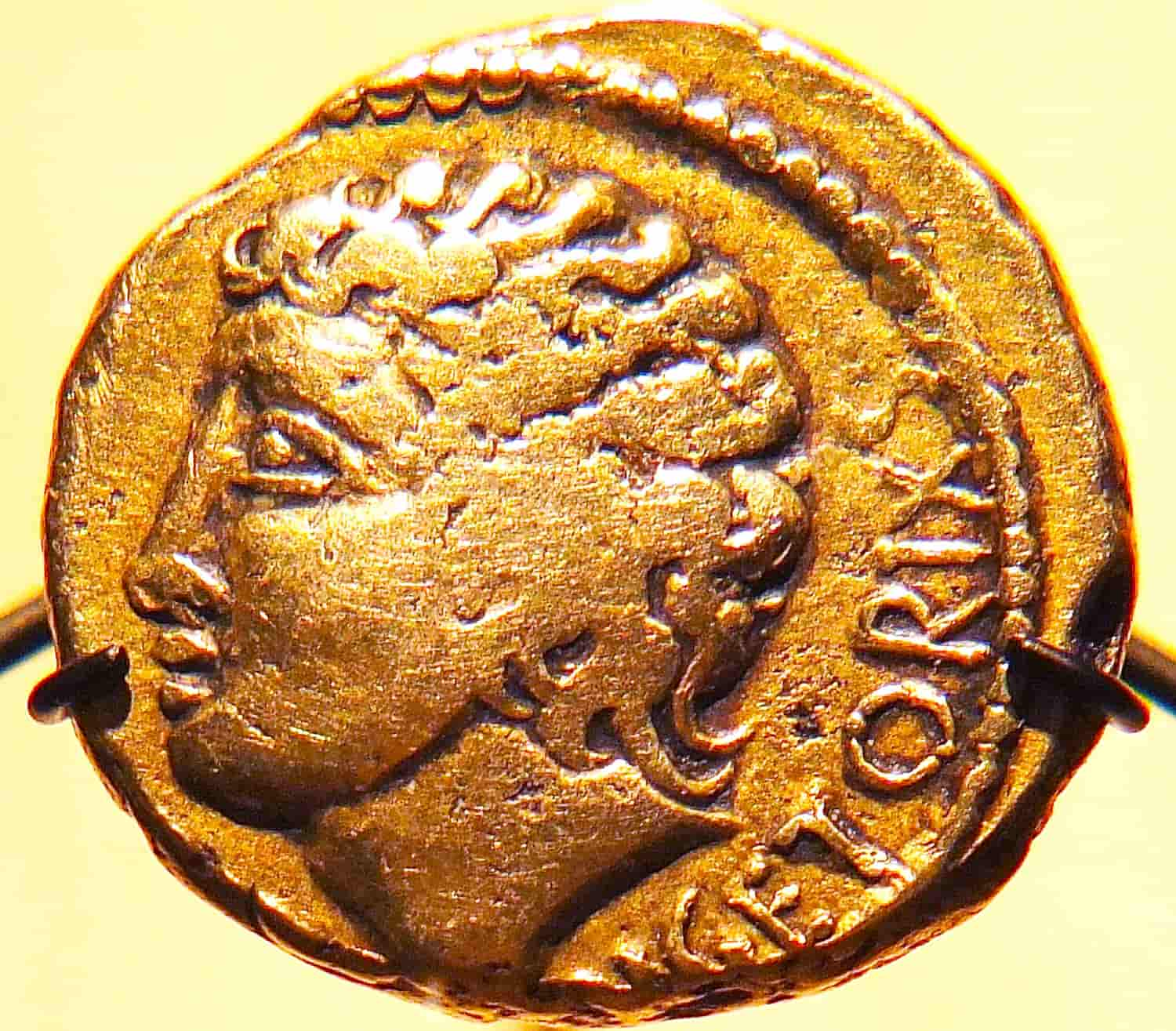Hannibal Barca, a prominent Carthaginian general of the 3rd century BC, etched his name into the annals of history. Renowned for his strategic brilliance, he embarked on a fateful path that placed him at odds with Rome during the iconic Second Punic War. These Punic Wars, a trilogy of momentous clashes spanning the years 264–146 BC, bore witness to Rome and Carthage’s titanic struggle for supremacy. Amid this tumultuous backdrop, the legacy of Hannibal endures as a symbol of Carthage’s resolute defiance against the ascendancy of Rome.
Hannibal’s origins trace back to Carthage, an eminent city-state nestled within the North African landscape. This urban enclave, established in 814 BC, arose from the determined flight of Tyre’s Queen, encapsulating the heritage of a Phoenician trading outpost that had thrived since the 1100s BC at the same point.
Why Did Hannibal and Hamilcar Hate the Romans?
- Impact of the First Punic War: Hamilcar bore witness to Carthage’s defeat during the First Punic War (264-241 BCE) against Rome, which resulted in the cession of Sicily to Rome. This significant loss ignited a fervent desire for retribution and the restoration of Carthaginian prestige.
- Treaty Terms and Tribute: Following the First Punic War, Rome imposed a punitive peace treaty on Carthage, imposing an annual tribute payment. This onerous arrangement not only eroded Carthage’s economic strength but also subjected its leadership to humiliation.
- Expansionist Ventures in Spain: Hamilcar set his sights on expanding Carthaginian influence in Spain as a means of rejuvenating its power. He envisioned Spain as a rich source of both resources and potential recruits, essential for revitalizing the Carthaginian military.
- Preservation of Family Honor: Motivated by a strong desire to revive his family’s honor and legacy, Hamilcar endeavored to counterbalance the legacy of his esteemed Carthaginian general father, Barca. This familial pride likely fueled his staunch anti-Roman stance.
- Influence of Livy: Renowned historian Livy suggests that Hamilcar nurtured a deeply personal animosity toward Rome. Allegedly, he had his son Hannibal pledge an eternal enmity towards Rome. While this account may carry a degree of exaggeration, it reflects the intense antipathy Hamilcar may have fostered.
- Strategic Positioning in Spain: Hamilcar’s strategic campaigns in Spain aimed not only to strengthen Carthaginian might but also to strategically counteract Roman influence in the western Mediterranean region.
An Upbringing Shaped by the Desire for Revenge
Hannibal’s father, Hamilcar Barca, also stands as a prominent Carthaginian military figure. He assumed the mantle of commander-in-chief during Carthage’s engagement with Rome in Sicily, orchestrating the Carthaginian forces from 247 to 241 BC. Following Sicily’s relinquishment to Rome and Carthage’s capitulation, Hamilcar embarked on an odyssey, initiating the subjugation of the Iberian Peninsula starting in 237 BC.
A notable facet of this endeavor was the involvement of his son, Hannibal, who served under the command of his brother Hasdrubal and directed the cavalry. Hamilcar envisioned the Iberian Peninsula as the springboard for Carthaginian assaults against Rome, an aspiration deeply instilled within Hannibal himself.
Hamilcar played a crucial role in shaping Hannibal’s formative years and nurturing in him a yearning to erase the stigma of Carthaginian setbacks, which sparked a desire to take revenge on Carthage for its prior defeats in the First Punic War. During this time, Hannibal pledged to his father that he would never be friends with Rome and carry eternal hostility toward the Romans.
In the year 221 BC, a pivotal turning point occurred when Hasdrubal met his demise through assassination.
Following this, Hannibal assumed the leadership role. At the age of 26, he not only rose to the position of cavalry commander but also took on the overall command of the army.
Hannibal’s prowess on the battlefield stood as a testament to his tactical acumen, weaving together caution and audacity while guiding his troops with resolute determination. Combining this with his mastery over the logistics fortified his position as a leader and a revered commander.
The Outbreak of Battles
With his conquest of Saguntum (a Roman ally in Hispania) in the year 216 BC, Hannibal orchestrated the start of hostilities between Rome and Carthage.
This event served as the ignition for the Second Punic War and etched Hannibal’s name as an antagonist in the annals of history, intertwined with the fate of the Roman city.
With an army of over 40,000 men, Hannibal crossed the Ebro River, the Pyrenees, the south of Gaul, and finally the Alps. He outran all Roman troops who attempted to stop him, and the Cisalpine Gaul also later joined his cause.
Yet, the endeavor of crossing the formidable Alps with war elephants, coupled with clashes along the way, exacted a heavy toll on Hannibal’s forces.
- See also: What Kind of Elephants Did Hannibal Use?
Despite the adversities, Hannibal displayed remarkable resilience, orchestrating victories over Roman legions and propelling his Carthaginian army close to the heart of the Eternal City of Rome itself.
The following series of Carthaginian triumphs etched an imprint upon the consciousness of Rome, leaving a lasting mark that resonated within the Roman mindset:
- November 218 BC: Battle of Ticinus
- December 218 BC: The Battle of the Trebia (the first major battle of the Second Punic War)
- Spring 217 BC: Battle of Lake Trasimene
The Carthaginian Threat to Rome
But Hannibal gave up the siege of Rome only a short distance away from the city due to the shortage of resources. He continued southward in Italy, skirting around the city. Rome confronted the relentless Carthaginian tactician on the plains of Cannae in the Apulia region, fueled by a cocktail of fear and apprehension.
It was on this fateful day, August 2, 216 BC, that history witnessed the total collapse of Roman forces by the Carthaginians, with a staggering 60,000 Roman soldiers left incapacitated during the Battle of Cannae.
The victory in the Battle of Cannae emerged as the zenith of Hannibal’s triumphs, a moment that imprinted his name in history. As a result of this success, Hannibal skillfully formed alliances with the former allies of Rome, Capua foremost among them.
Nonetheless, the brilliance of Hannibal’s military strategy encountered a formidable adversary in the form of internal rivalries. These rivalries plagued the Carthaginian Senate and led to the withering of Hannibal’s military achievements since the long-awaited reinforcements from Capua never materialized.
As the ebb and flow of conflict unfurled, the tide of fortune shifted back into Rome’s favor, with the reclamation of strategic strongholds like Syracuse, Capua, and Tarentum. In a crushing blow, the delayed reinforcements dispatched from Carthage were met with Roman supremacy, which resulted in a pivotal setback for Hannibal’s cause.
Entrapped within southern Italy for an arduous span of over 13 years, Hannibal’s grip on power weakened, yet his shadow of menace persisted, casting chaos over Rome until the curtain fell on his storied life.
Hannibal emerged as one of the few who threatened Rome’s heart, inflicting scars that would endure as a monument to his strategic genius, engraving a trauma in Rome’s history with the catastrophic losses he bestowed upon her once invincible legions.






